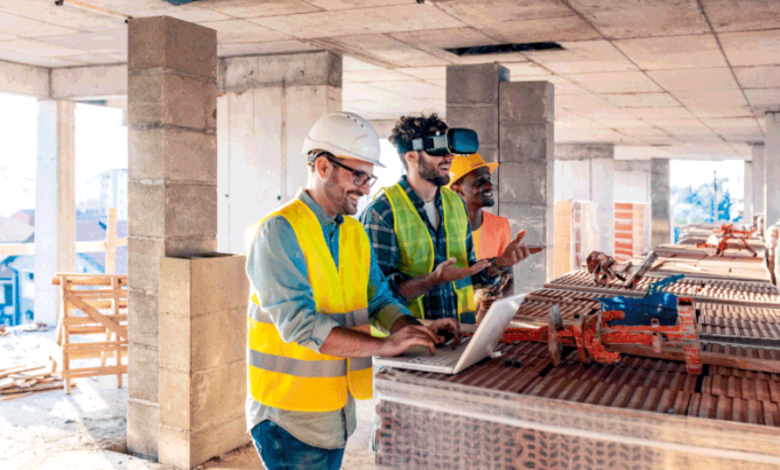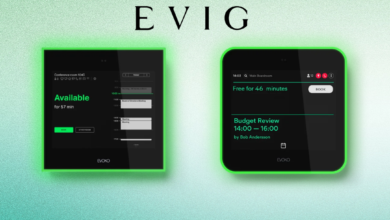Why Virtual Inspections Became a Necessity

Technology rarely replaces human connection entirely, but in certain situations, it reshapes how we connect, work, and solve problems. One such shift has been the rise of virtual inspections. Originally seen as a workaround or temporary solution, virtual inspections have grown into a viable and sometimes preferable option for assessing spaces, equipment, and properties without requiring someone to be physically present. But this tool wasn’t invented out of pure innovation—it was born from necessity.
Virtual inspections weren’t developed in a vacuum. They came about in response to a growing need for flexibility, speed, and safety in industries that rely on visual assessments. As businesses began facing logistical barriers, time constraints, and later, global disruptions like the COVID-19 pandemic, the old way of doing inspections—scheduling site visits, traveling long distances, and relying solely on in-person interaction—proved inefficient or impossible. The virtual inspection emerged to fill that gap.
The Early Drivers Behind the Innovation
Even before virtual inspections became common, the idea of remote oversight was slowly gaining ground. Industries like real estate, insurance, and construction were already experimenting with ways to streamline their review and approval processes. The goal was simple: save time and money without compromising quality. For many businesses with multiple properties or widespread operations, traveling to inspect every location was neither practical nor sustainable. They needed an alternative.
As mobile devices and video conferencing tools became more sophisticated, the potential for remote inspection became more realistic. People could now capture high-quality images, livestream walk-throughs, and communicate with inspectors or supervisors in real time. At first, this capability was used informally—think real estate agents showing a home to an out-of-town buyer via FaceTime or contractors sending progress photos to architects. But as the technology matured, so did the possibilities.
The turning point came when companies started recognizing that these remote tools could be systematized. With the right protocols in place, a virtual inspection could be just as thorough and credible as a traditional one. This realization set the stage for virtual inspections to evolve from a convenience into a core part of business operations.
How the Pandemic Accelerated Adoption
While the groundwork for virtual inspection technology had already been laid, it wasn’t until the COVID-19 pandemic that its widespread adoption truly accelerated. Practically overnight, in-person visits became difficult, discouraged, or outright banned. Workforces went remote. Supply chains faced new constraints. Yet critical industries—healthcare, housing, construction, and insurance, among them—still needed to function. Buildings still had to be inspected. Claims still had to be evaluated. Projects still had to be approved.
With limited options, virtual inspections quickly became the go-to method for keeping things moving. Insurance adjusters assessed property damage through smartphone video. City inspectors approved residential renovations using video calls. Real estate deals continued thanks to virtual home walk-throughs. What had once been a workaround became a lifeline.
But what surprised many businesses was how well it worked. Not only did virtual inspections solve the immediate problem of physical distance, but they also introduced a level of efficiency that improved turnaround times and reduced costs. Some companies reported faster approvals, higher customer satisfaction, and fewer scheduling delays. In some cases, the remote format even allowed for better documentation, since everything could be recorded and archived.
See also: How to Protect Yourself From Misuse of AI Face Swap Technology
The Lasting Impact of the Virtual Inspection
Now that the urgency of the pandemic has passed, virtual inspections haven’t gone away. Instead, they’ve become a permanent part of many workflows. What began as a response to a crisis has evolved into a modern approach that offers tangible long-term benefits.
For one, virtual inspections make it easier to scale. A single inspector can evaluate multiple sites across a wide geographic area in a fraction of the time it would take to travel between them. This efficiency makes it possible for organizations to serve more clients, manage more projects, or maintain higher levels of oversight with the same resources.
They also increase accessibility. People in remote areas or with limited mobility can now participate in inspections more easily. Businesses can tap into expertise from anywhere in the world, bringing in specialists who might not otherwise be available due to distance or scheduling conflicts.
And in industries where speed matters—like insurance claims or commercial construction—being able to conduct an inspection immediately rather than waiting days for someone to arrive on-site can make a huge difference. Faster inspections mean quicker claims, quicker project approvals, and ultimately, faster service delivery.
Understanding the Virtual Inspection Today
At its core, a virtual inspection involves assessing a space, item, or system remotely using digital tools. This could include live video calls, recorded walkthroughs, 360-degree imaging, drone footage, or even data from smart sensors. It allows inspectors to evaluate the condition, compliance, or progress of something without needing to be physically present.
These inspections often follow the same protocols as traditional ones. There’s a checklist. There’s documentation. There’s communication between the inspector and the individual on-site, who may be guided to show specific features or areas. The key difference is the format—remote rather than in-person.
In some cases, virtual inspections can be hybrid. For example, a building inspector might review digital floor plans and photos remotely before making a final site visit, reducing the time spent on location. Or a safety officer might perform a monthly inspection virtually, with only occasional physical follow-ups.
While there are still limits—some inspections require tactile measurements, specialized equipment, or on-site testing—many routine assessments can be performed virtually with impressive accuracy.
The Broader Implications for Business
The invention of virtual inspections didn’t just fill a temporary gap. It changed how businesses think about access, efficiency, and innovation. It proved that valuable tasks don’t always require a physical presence. That with the right tools and trust, teams can collaborate and assess remotely without sacrificing quality.
As industries continue to evolve, virtual inspections are likely to become even more advanced. With the integration of artificial intelligence, augmented reality, and IoT (Internet of Things) devices, inspections will be able to provide even richer, real-time insights. Imagine a drone inspecting a rooftop while AI flags damage in real time—or a smart building sending condition updates directly to an app.
Ultimately, the invention and adoption of the virtual inspection is a reflection of how business adapts under pressure and evolves through technology. It’s not about replacing human judgment—it’s about enhancing it with smarter, more efficient tools.
Conclusion: A Practical Solution Born from Need
Virtual inspections were invented not as a luxury, but as a necessity. They arose from the need to work smarter, respond faster, and adapt to constraints without compromising quality. What started as a quick fix has become a lasting solution—one that businesses of all sizes and industries now rely on to keep moving forward.
As we look ahead, the virtual inspection will continue to shape how companies operate, proving that innovation often begins with a simple question: how can we do this better? And in this case, the answer came through a camera lens, a wireless signal, and a willingness to try something new.





